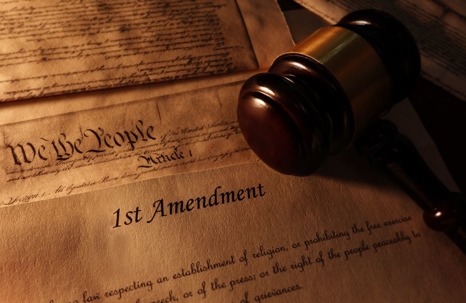We have for decades been able to speak freely, gather, assemble for worship or protest and go to events with thousands of other people. But along came COVID-19, community spreading of the coronavirus, millions of infections and almost 200,000 deaths creating a pandemic both here and abroad.
How do our freedoms hold up when Governors issue orders limiting gatherings to 50 or 100 people, require masks, and even close certain businesses? Can Governors do those things when our Bill of Rights in the very first amendment says otherwise?
The answer is yes. When there is a need to use what is called “the police power” at a State level due to a flood, conflagration, riot or public health crisis our rights may be temporarily curtailed for the greater good.
What then are the limits on government doing things it otherwise could not do? “Where… a law regulates speech only incidentally, as a consequence of expressly regulating conduct, it will withstand first amendment scrutiny if, in its application to incidental speech, it is no more restrictive than a time, place, and manner regulation.” United States v. O’Brien, 391 U.S. 367, 376-77 (1968).
Determining whether a time, place, and manner regulation comports with the Constitution, requires a Court to employ a three-prong test. The Court must determine whether the regulation: (1) is content-neutral; (2) narrowly serves a significant governmental interest; and (3) allows for other opportunities for expression.
Thus the first step is to be sure that a COVID-19 restriction is content neutral. A limit of 100 people in a public gathering to address the risk of spread came before the United States Supreme Court this Spring. A church challenged the limit as violating the First Amendment’s protection to freely exercise one’s religion. The Chief Justice noted that in our federal system the “safety and health of the people” is governed by the general police power of the states “to guard and protect. Their decisions should not be subject to second guessing by an “unelected federal judiciary” lacking the expertise to assess public health emergencies said the court in South Bay United Pentecostal Church v. Newsom (May 29, 2020). The orders California’s Governor issued were not aimed only at churches but were broad and neutral in terms of the content of the message, be it plays, movies, etc.
The second step of the analysis is to determine whether the restriction is narrowly tailored to serve a significant government interest. Courts have long held that public health, safety, and welfare constitute a significant government interest.
In a challenge to Governor Chris Sununu’s Executive Order #2020-04 limiting scheduled gatherings to 50 people, Superior Court Judge Kissinger concluded that:
“EO 2020-04 clearly declared a state of emergency as the result of an impending public health crisis in the State of New Hampshire, and Emergency Order #2 was issued by Governor Sununu to address the public health crisis established in that executive order. As a result, the State has established that it has a significant interest in promoting public health and safety as related to the spread of COVID-19.”
Binford v. Sununu, Merrimack County #217-2020-CV-00152 (March 25, 2020),
As required by the caselaw the New Hampshire judge then turned to the third step in reviewing Emergency Order #2, which is whether it allows for alternative opportunities for expression. Order #2 only bans scheduled gatherings of 50 or more people and dine-in restaurant services. People are free to attend scheduled gatherings with fewer people. They can attend impromptu gatherings of any kind. They are free to communicate via the internet or telephone. They may tune into televised events. They can continue to dine together in their homes or outdoors.
The trial court then concluded the order passed muster:
There are a wealth of opportunities for individuals to exercise their right to freely assemble and associate that do not require them to gather in large groups or eat at a restaurant during a public health emergency. Accordingly, the Court finds that Emergency Order #2 allows for alternative opportunities of expression.
The lesson for all of us in unusual times of a health crisis or mass riots was well stated over 70 years ago by Justice Robert Jackson in his dissenting opinion in Terminiello v. Chicago, 337 U.S. 1 at 37 (1949), that the “court should not convert the constitutional Bill of Rights into a suicide pact.”

